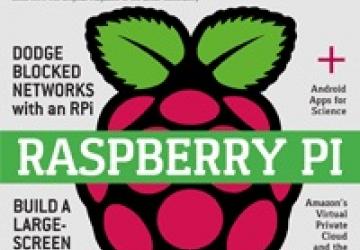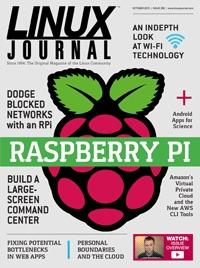October 2015 Issue of Linux Journal: Raspberry Pi


A Tasty Slice of Awesome
I love the flavor of raspberries, but quite honestly, the seeds gross me out. They get stuck in my teeth, and whenever I crunch them, it feels like I have a mouth full of sand. That (among other geeky reasons) is why I love Raspberry Pi devices so much. They have all the awesome, with none of the seeds! This month is our Raspberry Pi issue, and if you've ever wanted a reason to fiddle with one of the tiny computers, look no further.
Before getting into the RPi projects, Reuven M. Lerner takes us back into the world of slow Web applications. Last month he described how to identify some of the bottlenecks for which Web apps are prone; this month he starts to explore what to do about those bottlenecks. Whether you need to beef up your database or tweak some of your code, Reuven will help you not only identify, but also fix come common issues causing slowdowns.
Dave Taylor plays with blocks again this issue, but since he invites us to play along, we won't complain. Seriously though, Dave continues his series on how to figure out the number of words you can possibly get from a given set of children's letter blocks. It's amazing how many words can be generated from a limited set of letters! Speaking of limited sets of letters, Kyle Rankin helps us master three-letter acronyms—well, a few of them anyway. Kyle shows how to use his beloved command line to manipulate Virtual Private Cloud (VPC) instances in the EC2 component of Amazon's Web Services (AWS). The Web interface is convenient, but there are many times it is easier (and more important, scriptable) to be able to utilize the command line for common tasks. Kyle describes how to use those tools and how to get around some of the frustrations as well.
My family recently moved into a new house, and one of the first things I did was install Wi-Fi. The old plaster and lath walls make signal penetration a bit frustrating, and while I was figuring out how to best place access points, it occurred to me how complicated wireless networking has become. This month I start a two-part series on Wi-Fi. I cover the various technologies this month, and next month I'll talk about the actual installation. Even if you're a Wi-Fi veteran, you might find something interesting as I tear apart the spectra.
Finally, let's look at the Raspberry-flavored section of this issue. Bill Childers starts with a really cool project that turns a Raspberry Pi server at your home or business into an Internet portal allowing access even when on severely restricted networks. If you've ever been at a hotel and discovered that port 22 traffic is blocked, you'll want to check out Bill's article. He not only will help you get SSH working again, but he also uses a Raspberry Pi to make your entire computing experience useful again.
John S. Tonello tackles a Raspberry Pi project this month as well, but he takes advantage of the new Raspberry Pi 2. In fact, he uses two of them. John's goal was to replace a bank of ten 19-inch monitors, which were used as a sort of dashboard for monitoring, with two 4K-resolution monitors. That's a lot of screen real estate, and the new quad-core RPi units were up to the task. Before you tackle a similar project, I urge you to read John's article. It will save you hours of frustration and give you a heads up on what sort of performance to expect before you spend the money on a giant 4K television.
As always, this issue of Linux Journal contains lots of things I haven't covered in this intro. We have brief reviews, announcements, fun programs and plenty of useful tech tips. The star of the show, however, is a $35 computer. It's been several years since the Raspberry Pi was first introduced, and it still remains the favorite platform for weekend projects everywhere. The new RPi units are far more powerful, yet they manage to stay affordable enough for most hobbyists to purchase them without breaking the bank. Plus, they still don't have any seeds!
Available to Subscribers: October 1










